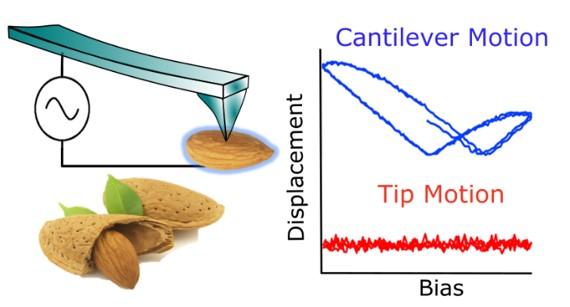
Artifacts in traditional AFM detection schemes can lead to false claims of ferroelectric or ionic hysteresis. Interferometric detection is used to separate cantilever and tip motions allowing unambiguous and quantitative mapping of electromechanical phenomena. Almonds, which are known not to be ferroelectrics, show artificial hysteresis when only cantilever motion is examined.
Scientific Achievement
A fully quantitative and artifact free approach for nanoscale mapping of electromechanics is achieved by combining interferometric sensing with voltage modulated atomic force microscopy (AFM).
Significance and Impact
Reliable quantification of electromechanical responses can avoid mistaken identification and is critical to diverse applications from information technologies to polymer and biological sensors.


